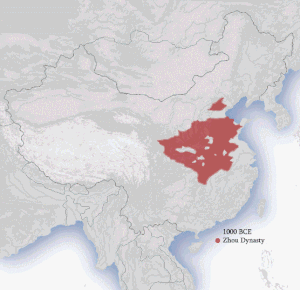"Empire of China" redirects here. For the empire founded by Yuan Shikai, see Empire of China (1915–16). For the book, see Imperial China: 900–1800.
| History of China | |||||||
|---|---|---|---|---|---|---|---|
| ANCIENT | |||||||
| Neolithic c. 8500 – c. 2070 BC | |||||||
| Xia dynasty c. 2070 – c. 1600 BC | |||||||
| Shang dynasty c. 1600 – c. 1046 BC | |||||||
| Zhou dynasty c. 1046 – 256 BC | |||||||
| Western Zhou | |||||||
| Eastern Zhou | |||||||
| Spring and Autumn | |||||||
| Warring States | |||||||
| IMPERIAL | |||||||
| Qin dynasty 221–206 BC | |||||||
| Han dynasty 206 BC – 220 AD | |||||||
| Western Han | |||||||
| Xin dynasty | |||||||
| Eastern Han | |||||||
| Three Kingdoms 220–280 | |||||||
| Wei, Shu and Wu | |||||||
| Jin dynasty 265–420 | |||||||
| Western Jin | |||||||
| Eastern Jin | Sixteen Kingdoms | ||||||
| Northern and Southern dynasties 420–589 | |||||||
| Sui dynasty 581–618 | |||||||
| Tang dynasty 618–907 | |||||||
| (Wu Zhou interregnum 690–705) | |||||||
| Five Dynasties and Ten Kingdoms 907–960 | Liao dynasty 907–1125 | ||||||
| Song dynasty 960–1279 | |||||||
| Northern Song | W. Xia | ||||||
| Southern Song | Jin | ||||||
| Yuan dynasty 1271–1368 | |||||||
| Ming dynasty 1368–1644 | |||||||
| Qing dynasty 1644–1911 | |||||||
| MODERN | |||||||
| Republic of China 1912–1949 | |||||||
| People's Republic of China 1949–present | Republic of China on Taiwan 1949–present | ||||||
Written records of the history of China can be found from as early as 1500 BC[1][2] under the Shang dynasty (c. 1600–1046 BC).[3] Ancient historical texts such as the Records of the Grand Historian (ca. 100 BC) and the Bamboo Annals describe aXia dynasty (c. 2070–1600 BC), which had no system of writing on a durable medium, before the Shang.[3][4] The Yellow Riveris said to be the cradle of Chinese civilization, although cultures originated at various regional centers along both the Yellow River and the Yangtze River valleys millennia ago in the Neolithic era. With thousands of years of continuous history, China is one of the world's oldest civilizations,[5] and is regarded as one of the cradles of civilization.[6]
Much of Chinese culture, literature and philosophy further developed during the Zhou dynasty (1046–256 BC). The Zhou dynasty began to bow to external and internal pressures in the 8th century BC, and the kingdom eventually broke apart into smaller states, beginning in the Spring and Autumn period and reaching full expression in the Warring States period. This is one of multiple periods of failed statehood in Chinese history, the most recent being the Chinese Civil War that started in 1927.
Between eras of multiple kingdoms and warlordism, Chinese dynasties have ruled parts or all of China; in some eras control stretched as far as Xinjiang and Tibet, as at present. In 221 BC Qin Shi Huang united the various warring kingdoms and created for himself the title of "emperor" (huangdi) of the Qin dynasty, marking the beginning of imperial China. Successive dynasties developed bureaucratic systems that enabled the emperor to control vast territories directly. China's last dynasty was the Qing (1644–1912), which was replaced by the Republic of China in 1912, and in the mainland by the People's Republic of China in 1949.
The conventional view of Chinese history is that of alternating periods of political unity and disunity, with China occasionally being dominated by steppe peoples, most of whom were in turn assimilated into the Han Chinese population. Cultural and political influences from other parts of Asia and the Western world, carried by successive waves of immigration, cultural assimilation, expansion, and foreign contact, form the basis of the modern culture of China.




No comments:
Post a Comment